I’m a dancer practicing contact improvisation in Bloomington, IN.
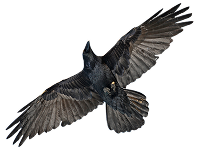
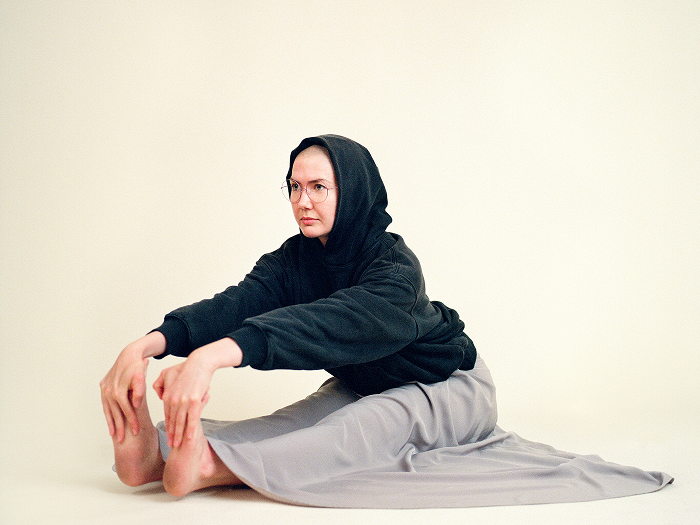
My movement is shaped by contemporary technique, ballet, pop music, physics, stuff floating in the bog of my unconscious, and hypermobility. My relationship with CI and improvisation more broadly began in 2010 under the guidance of Chris Aiken and David Brick. In 2016, I earned a BA from Bennington College in Dance as Spirituality where I focused on dance and architecture with an emphasis on dance as a site for convening with the divine. I have performed in the works of Sam Wentz, David Brick, Beckett Warzer, Chris Aiken, Joe Chvala, and Nicole Wolcott, and presented my own choreography in Vermont and Philadelphia.
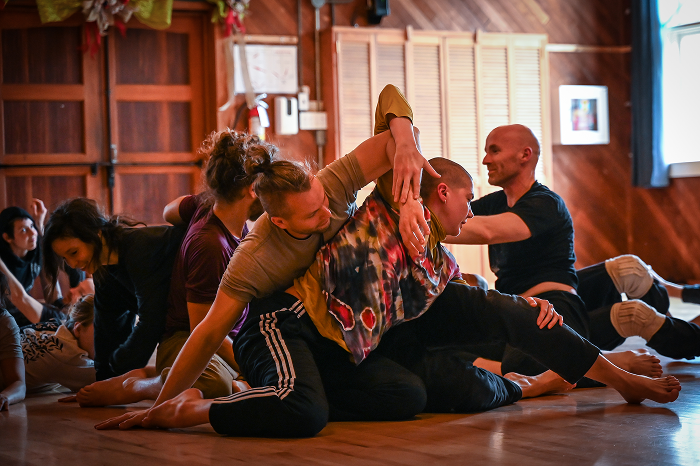
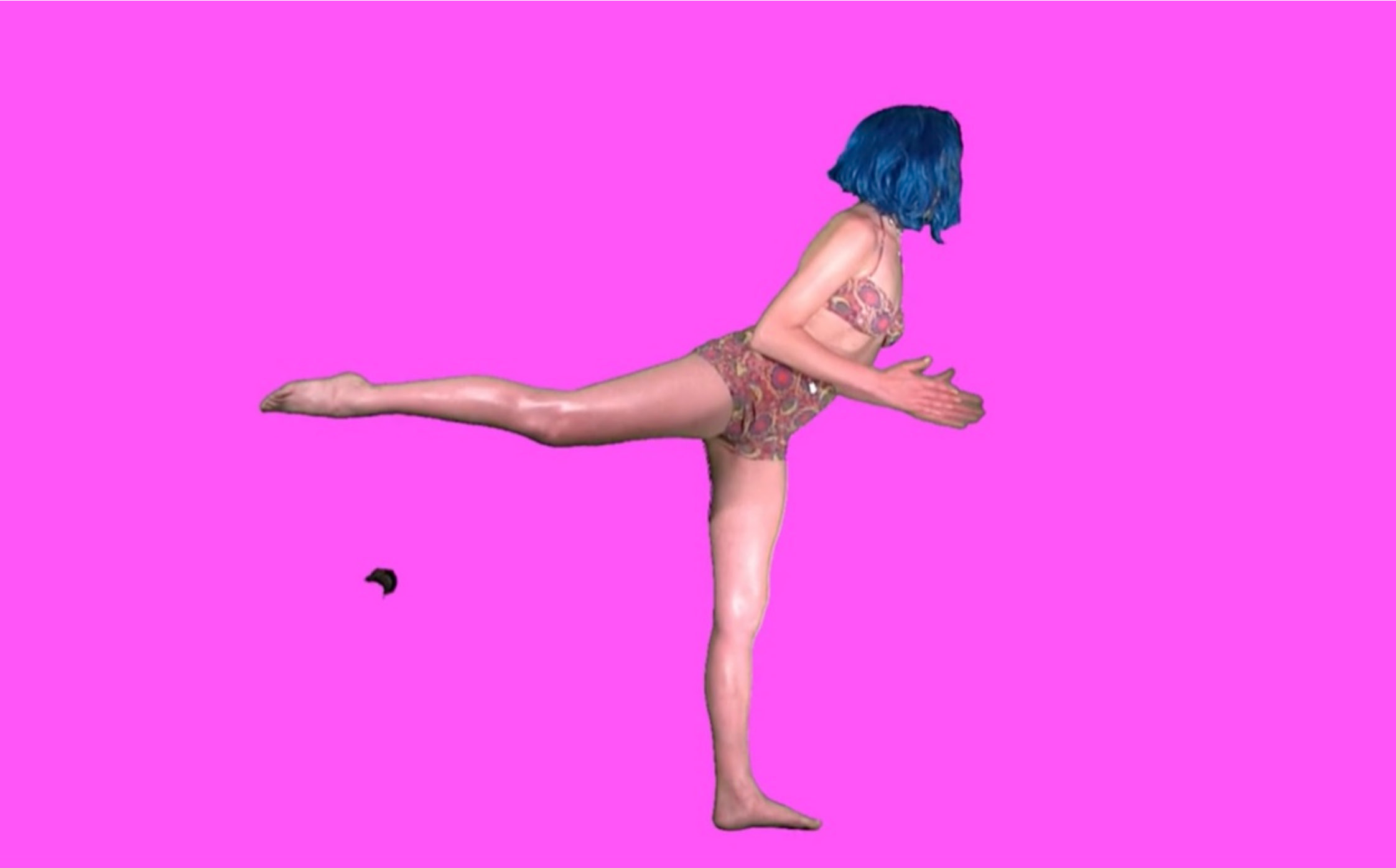
Dance history
I was captain of my high school varsity dance team in the late aughts, choreographing halftime routines for football and basketball games. I made mixes of pop songs burned onto CDs from LimeWire and recorded them onto cassette tapes with my translucent lavender Sony boombox. Finding contact improvisation after high school was a revelation—the glitter and devotion I poured into making dances alone in the basement exercise room felt accessible in partnering, and I was stained with awe at the power of improvisation to open a portal to something deep and mysterious. Studying dance with architecture in college felt intuitive; both architects and choreographers build structures that guide bodies through patterns in space and time.
In my 20s, I danced professionally and in my friends’ pieces. My movement work explored my relationship with femininity and the internet. In 2016, I printed a copy of Throwing Like a Girl and carried it around in my backpack for six years. I’ve watched excerpts from Tere O’Connor’s Baby on YouTube more than a hundred times, and once I had a conversation with Steve Paxton about how it seems like dance isn’t really about physical movement. In my late twenties, I engaged with dance mostly through writing, publishing essays variously.

Physics as dance
What I’m doing now is a response to the dances I made a decade ago. I currently study physics at Indiana University. In my dances, I traced the looping architecture of a femininity that confined my sense of self and my place in the world—narrative structures etched in my nervous system, inscribed in space in my day-to-day life, reinforced by my life online. Physics offers a framework for dismantling those structures. I use stillness as leverage, breathing into constraints, allowing the subtle body of my imagination to engage deeply while my physical body remains still while solving problems. Wresting clarity from the froth of disorientation, physics hones my focus like sunbeams through a lens. Through science, I grind away the blocks crowding my inner space, clearing a pathway for the fullness of my heart to shine unobstructed.
I first discovered physics through math for computer graphics, driven by my curiosity about augmented reality in live performance. Now, I’m exploring the scientific method as a structure for ensemble-based collaboration and getting lost in the woods again.
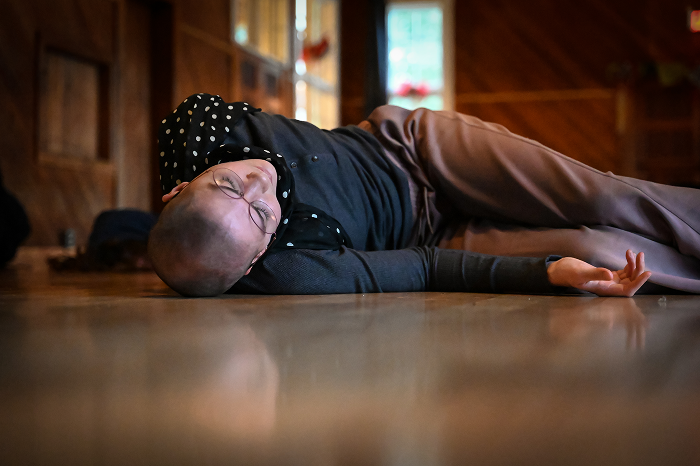
Hypermobility
Living with a hypermobility spectrum disorder has taught me to move at the speed of my awareness, and I extend that sensitivity to my partners in dancing as well. My practice is supported by Corrective Exercise and the Egoscue Method, saline infusions, manual soft tissue work, regular craniosacral therapy, somatic trauma therapy, and psychedelic medicine.

Dance with me
If you find yourself in central Indiana and want to dance, please get in touch, particularly if you have a dedicated interest in CI. Nothing would make me happier than to meet in movement. Dancers with hypermobility: I’m happy to share resources and exchange insights about care, so please don’t hesitate to reach out.